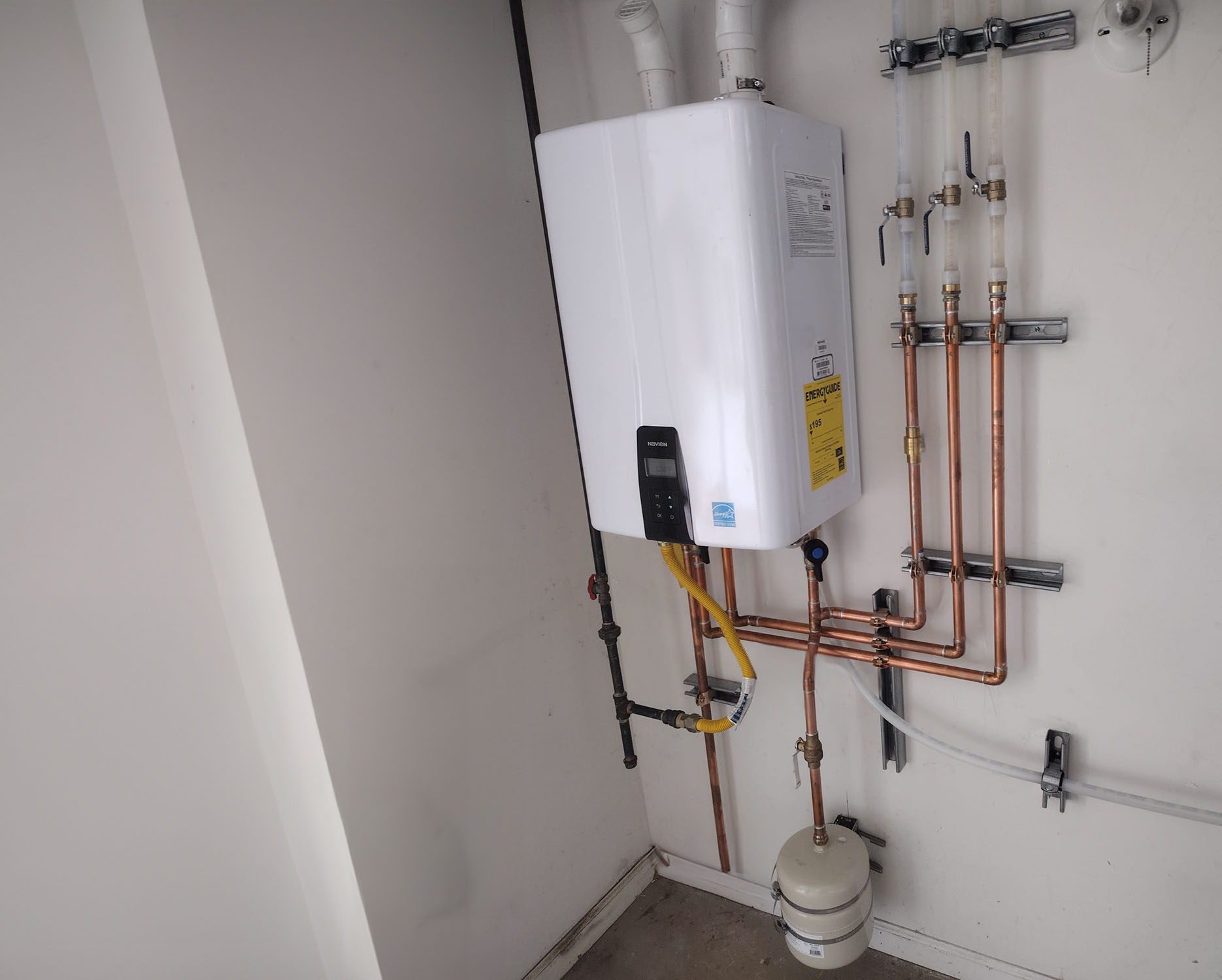

Energy Efficiency
Your trusted partner for professional home services. Quality workmanship, guaranteed satisfaction.




- HEP
- Energy Efficiency
Energy Efficiency | Tankless Water Heater Install | Plumbing | Crossville
Imagine endless hot showers, lower utility bills, and extra space in your mechanical room—all delivered by friendly, local pros who know Crossville’s hard-working homes inside and out. HEP’s energy-efficiency plumbing team specializes in tankless water heater install services that swap out bulky, energy-hungry tanks for sleek, on-demand systems. Because water is heated only when you turn on the tap, you can cut standby energy loss to almost zero, enjoy a steady stream of hot water, and feel good about shrinking your household’s carbon footprint.
From the first phone call to the final system check, our certified technicians handle everything: sizing the unit to match your family’s lifestyle, upgrading gas or electrical connections if needed, and hauling away the old tank. We back every installation with transparent pricing, industry-leading warranties, and the small-town courtesy customers have trusted since 1980. Ready to make the smart switch? Give HEP a call today and see why Crossville homeowners count on us for comfort that never runs out.
FAQs
How does a tankless water heater save energy compared to a traditional storage-tank heater?
A tankless (on-demand) unit heats water only when you open a hot-water tap. A traditional tank continually reheats 40–50 gallons to keep it at 120 °F, losing heat through the tank walls 24/7. By eliminating this standby loss, a properly sized tankless model can cut water-heating energy use by 24–34 % for homes that use less than 41 gallons of hot water per day (typical for many Crossville households). Even in larger homes that use 80 + gallons, savings of 8–14 % are common. That translates to lower monthly utility bills and a reduced carbon footprint.
Is my Crossville home suitable for a tankless water heater installation?
Almost any residence can accommodate a tankless unit, but we evaluate three main factors at the onsite visit: (1) Fuel source—Natural gas is available in most of Crossville; if you are on propane or electricity we size the burner or element accordingly. (2) Gas line, venting, and electrical capacity—A gas tankless model may need a ¾″ gas line and Category III or IV stainless venting, while an electric unit may require one or more 40- to 60-amp breakers. Upgrades are common but usually straightforward. (3) Water quality—Crossville’s municipal water is moderately hard (about 5–7 grains). We recommend a simple scale-inhibitor filter to prevent mineral buildup. During your estimate we verify these conditions and provide a fixed quote for any needed modifications.
What size tankless water heater do I need for my household?
Sizing is based on simultaneous demand measured in gallons per minute (GPM) and the temperature rise required. In Crossville, incoming winter water is roughly 50 °F and you typically want 120 °F at the tap, so you need a 70 °F rise. A shower averages 2.0 GPM, a dishwasher 1.5 GPM, and a washing machine 2.0–2.5 GPM. If you run two showers and a dishwasher at once, you need about 5.5–6 GPM at a 70 °F rise. We usually install 7.5–9.0 GPM gas units for three-bath homes and 11 + GPM units for larger families. Electric units are best for light-demand homes or point-of-use applications because their maximum rise is lower.
Are there rebates or incentives in Crossville or Tennessee for upgrading to a tankless water heater?
Yes. (1) The Federal Energy Efficient Home Improvement Tax Credit (25C) allows you to claim 30 % of the installed cost of a qualified ENERGY STAR tankless gas heater, up to $600. (2) Volunteer Energy Cooperative and Upper Cumberland Electric seldom offer direct rebates, but they do provide low-interest energy-efficiency loans that can include water-heater upgrades. (3) Many Crossville natural-gas customers are eligible for a $100–$150 utility rebate when replacing a tank model with a high-efficiency tankless unit. We supply the paperwork and model numbers, so you merely sign and submit.
How long does installation take and will my plumbing need to be altered?
A straightforward replacement of a gas tank with a gas tankless heater usually takes one work-day (6–8 hours). Tasks include mounting the wall unit, rerouting hot/cold lines, connecting the gas line, adding a condensate drain for high-efficiency models, and installing stainless venting through the wall or roof. If we must upsize the gas line or add a new 240 V circuit for an electric model, add 2–4 hours. Your water service will be off for only about 1–2 hours and we schedule around your needs. All work is permitted through Cumberland County Building Codes and pressure-tested before we leave.
What maintenance and lifespan can I expect from a tankless unit?
With annual maintenance, a quality tankless water heater lasts 20–25 years—roughly double the life of a standard tank. We recommend: (1) Flushing the heat exchanger with a 5-gallon vinegar solution every 12 months to remove scale; (2) Cleaning the inlet screen filter quarterly; (3) Checking the condensate trap and vent for obstructions. Our Comfort Club plan handles these tasks for about the cost of a streaming subscription and keeps the manufacturer’s warranty (5–15 years depending on model) intact. Because the unit has modular components, most repairs involve swapping a part instead of replacing the entire heater, saving you money long-term.